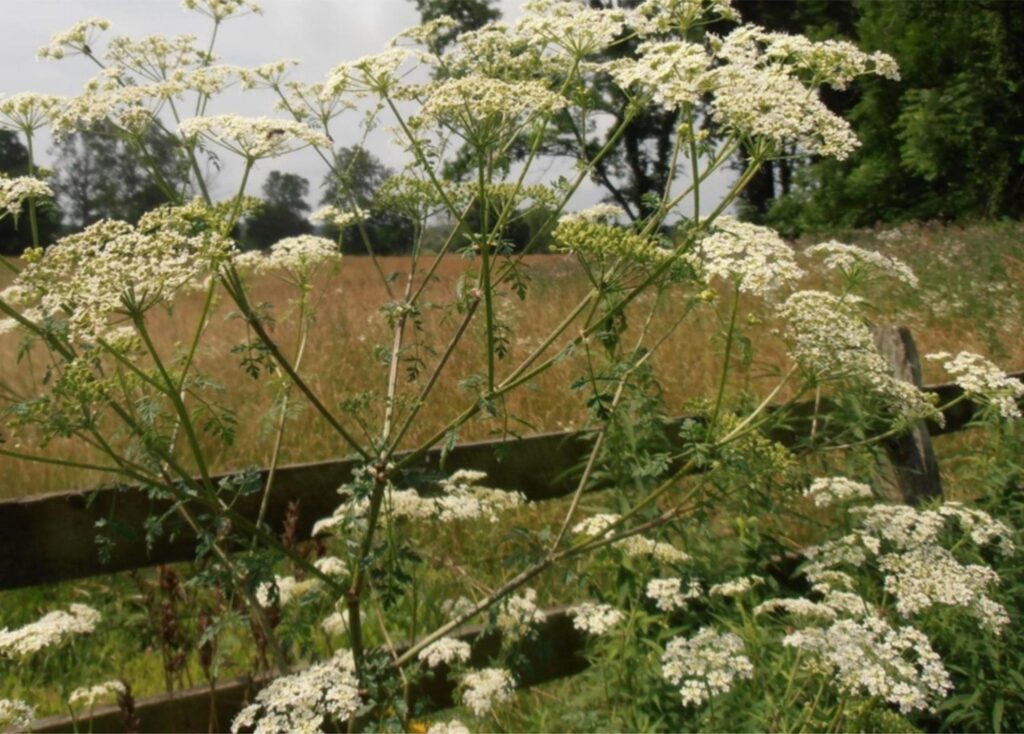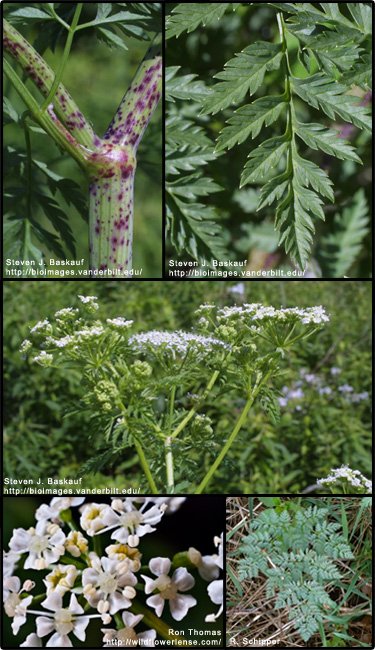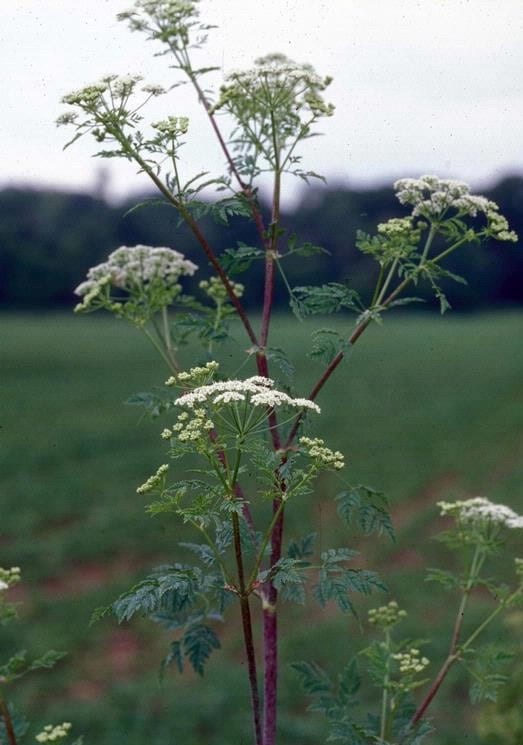
![]() Poison Hemlock Alert – Help Us Keep the Trails Safe
Poison Hemlock Alert – Help Us Keep the Trails Safe ![]()
Poison hemlock has been spotted along sections of local trails. This plant is extremely toxic to humans and animals — even through skin contact or breathing in particles from disturbed plants. It’s critical that we stop it from spreading, and that it’s removed safely.
![]() How to Identify Poison Hemlock:
How to Identify Poison Hemlock:

- Stems: Smooth, green, and marked with purple blotches or streaks (no hairs)
- Leaves: Delicate, fern-like, and finely divided (resembles parsley or wild carrot)
- Flowers: White clusters arranged in an umbrella shape (blooming late spring/summer)
- Height: Can reach 6–10 feet tall when mature
- Found along trail edges, ditches, roadsides, and open disturbed soil
Do not touch or handle this plant unless you are properly protected. Even dried stalks remain toxic.
![]() Safe Removal Guidelines:
Safe Removal Guidelines:
- Wear gloves, long sleeves, eye protection, and a mask
- Remove when small — early in the season before it flowers
- Dig out the entire taproot (at least 6–8 inches deep)
- Do not shake off dirt — bag plants immediately in heavy-duty trash bags
- Dispose in a landfill (never compost or leave in brush piles)
- Never burn it — the smoke is dangerous
- Do not mow or trim flowering or seeding plants — this spreads toxic debris and seeds
![]() What Not to Do:
What Not to Do:
- Don’t touch with bare hands
- Don’t mow or weed-whack once it’s bolted or flowering
- Don’t burn or compost
- Don’t assume it’s harmless just because it looks like a wildflower

If you spot a patch of it, snap a photo from a safe distance and let us know where it is. Thanks for helping us protect the trails and everyone who uses them.
#TrailSafety #PoisonHemlock #FASTtrails #knowbeforeyoupull


